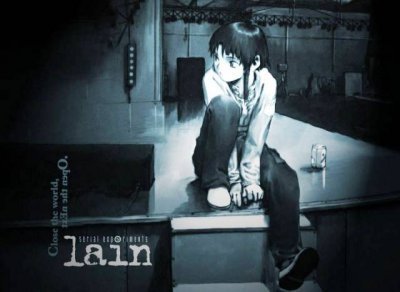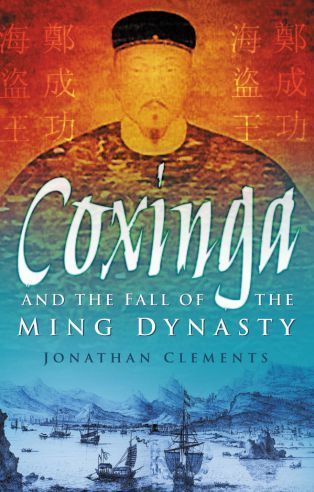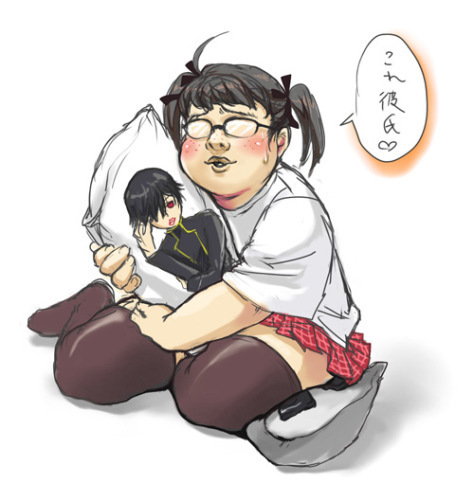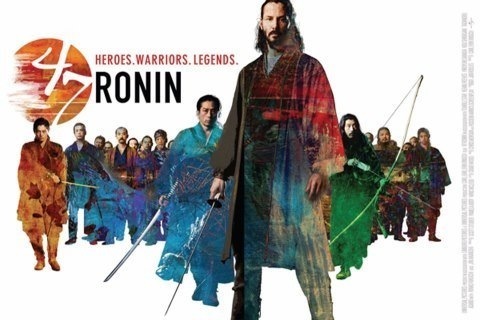Jonathan Clements's Blog, page 2
August 5, 2013
Podcast #19
Expletives deleted on our 19th podcast
 Jeremy Graves, Andrew Hewson and Jerome Mazandarani (with Jonathan Clements of Schoolgirl Milky Crisis joining from the interwebs) are on hand to discuss new releases, upcoming releases, behind-the-scenes gossip, and a whole bunch of topics from jobs in the anime business to Google glasses, available to download now.
Jeremy Graves, Andrew Hewson and Jerome Mazandarani (with Jonathan Clements of Schoolgirl Milky Crisis joining from the interwebs) are on hand to discuss new releases, upcoming releases, behind-the-scenes gossip, and a whole bunch of topics from jobs in the anime business to Google glasses, available to download now.
00:00 Jeremy’s usual hello, and an announcement of Sword Art Online, coming in December.
03:00 Thoughts on the Manchester Comic Con.
04:20 Jonathan’s hottest events — probably Finland.
06:00 How does someone get into the translation business? Is there any way to talk them out of it? What advantage do students from Edinburgh have? Spotting references in Japanese films and whether or not you should dedicate your entire efforts to nothing but anime translation. Another hymn to the glories of Bethan Jones. The politics of running a blog for promotional purposes.
15:00 The trouble that anime fans have finding work in the anime business
20:00 Delay to Deadman Wonderland. The Panasonic play issue with Un-go.
21:00 Last Exile, Fam the Silver Wing, pushed back to December.
22:00 Blue Exorcist definitive edition.
23:00 Streetfighter II the Anime — WTF is going on with the English dub?

25:50 The history of fifteening, and the unexpected role of Mrs Doubtfire.
28:00 Jerome’s journey to a sweary alternate universe. Quite a few bleeps in this section.
30:30 Jerome’s stomach grumbling grab-bag competition.
33:00 How to insult someone in Japanese.
37:00 12th August: Naruto Shippuden Movie 3: The Will Of Fire on DVD & BD; Naruto Shippuden Movie Triple Pack on DVD and BD; Hellsing: The Complete Original Series on DVD. Plus details of the Naruto tweetalong event on 15th August at 7pm.
45:00 Ask Manga UK. What are the chances of rereleasing 1990s classics? For example: Fist of the North Star.
50:00 The origins of New Fist of the North Star.
52:00 Will Black Rock Shooter lead to more subs-only releases?
53:00 Do you acquire TV rights?
56:00 Shifts in meaning of the term “TV show”.
58:00 The effects of production committees.
60:00 Kotobukiya at San Diego.
64:00 Chances for getting Darker Than Black sequels on Blu-ray?
66:00 19th August: Space Battleship Yamato, the live-action film coming on Blu-ray.
68:00 What does the kanji mean in the Manga logo?
71:00 Somehow, we get onto time-travelling steampunk foxes.
72:00 Chances of releasing A Certain Scientific Railgun?
73:00 More in-house authoring coming up?
77:00 Chances of releasing Yamato 2199 if the movie is successful?
79:00 Favourite sweets or chocolate? And we’re out.
The Podcast is available to download now HERE, or find it and an archive of previous shows at our iTunes page. For a detailed contents listing of previous podcasts, check out our Podcasts page.
July 31, 2013
Ryutaro Nakamura 1955-2013
 For those who missed it last week on the Manga UK blog, my obituary for Ryutaro Nakamura, the director of Serial Experiments Lain.
For those who missed it last week on the Manga UK blog, my obituary for Ryutaro Nakamura, the director of Serial Experiments Lain.
July 24, 2013
The 47 Ronin
In case you wondered what the hell was going on in this trailer, then this excerpt from A Brief History of the Samurai by Jonathan Clements, available now in the UK and US, might help. But only if you read it while watching Ninja Scroll, drunk, in a disco.
—-
The year of Mitsukuni’s death saw one of the defining events of eighteenth-century Japan, the infamous vendetta of the ‘Forty-Seven Ronin’. As part of the endless rounds of ceremonial and courtesy calls of the Tokugawa period, Asano Naganori, the young feudal lord of the Ako domain was ordered to entertain envoys in Edo who had freshly arrived from Kyoto. As part of the preparations, he met Kira Yoshinaka, one of the Shogun’s high-ranking officials. The men do not appear to have hit it off, and, reading between the lines, Kira was expecting substantial bribes and honoraria from Asano, even though it was his job to instruct him. Whatever the nature of the tensions between them, Kira had mastered the art of the snide comment, and seems to have made one allusion too many about Asano’s country origins. On 21 April 1701, under a covered walkway at one of the Shogun’s mansions, Kira pushed too far, and an enraged Asano  drew his short sword and knifed him in the face (or shoulder, depending on the source).
drew his short sword and knifed him in the face (or shoulder, depending on the source).
The wound was minor and guards soon separated the brawling men, but the damage was done. Regardless of claims of the right of samurai to defend their honour, drawing a weapon within the Shogun’s palace was a capital offence. Asano was ordered to commit seppuku, his lands were forfeit, and his followers were outcasts – ronin. When the news reached Asano’s castellan Oishi Yoshio, Oishi obediently shut down the castle, disbanded the soldiers, and handed the keys and manifests to the new lord appointed by the Shogunate. Where once there might have been war, the Tokugawa rule was supreme, and a lord could be unseated by simple decree.
However, while Oishi had done his duty to the Shogun by obeying orders, he was also determined to do his duty by the wronged lord Asano. In the company of several dozen fellow retainers (traditionally forty-seven, but possibly more), he plotted his revenge against Kira. Over the two years that followed, Oishi gave every appearance of being a discredited samurai. He was seen in Kyoto brothels, he was publicly drunk, and he was conspicuously on the Tokugawa-era scrapheap. In a move that has often been cited as an indicator of his true nobility, he even divorced his wife and disowned his children, to ensure that they would not have to bear any consequences for his coming vendetta.
Slowly, the Forty-Seven Ronin converged on Edo. One married the daughter of the man who had built Kira’s house, obtaining in the process the plans for the inside of the mansion. Others secretly smuggled weapons into Edo. The vengeful assassins struck on 14 December 1702, in a double-pronged assault on Kira’s snow-bound house.
The mansion erupted in a savage battle between Oishi’s men and Kira’s underlings, which saw sixteen of Kira’s men killed and another twenty-two wounded. Kira, however, had fled through a secret exit, leaving his bedclothes still warm. Oishi bested two other retainers in a dark, secluded courtyard, before dragging the man they were protecting into the light. Beneath the warm glow of the lantern, Oishi saw the scar left by his master’s knife. He had his man.
In one of the strange turnabouts of the samurai world, Oishi dropped to his knees and bowed before Kira, explaining who he was and humbly offering him the chance to atone for his misdeeds by committing suicide. It was only when the cowering Kira refused to respond that Oishi dragged him up by his hair, and hacked off his head. Their job done, the samurai carefully extinguished the lamps in the house in order to avoid accidental arson, and then ran for Asano’s grave with Kira’s head.
As the sun rose, word spread of their action, and they made their way to the temple grounds of Sengakuji amid something of a carnival atmosphere, congratulated and fêted by the townsfolk. They laid Kira’s head on Asano’s grave, and then turned themselves in to the authorities – all except one, who had been sent to Asano’s old domain to pass on the news.
The vendetta was an awful embarrassment for the Shogun’s government – the samurai had behaved impeccably according to samurai tradition, but had also defied a Shogunal prohibition. Edo locals did not help by petitioning the Shogun on behalf of Oishi and his men, pointing out how true they were to the nebulously defined samurai code of honour. Eventually, the Shogun ordered that instead of the death penalty as common murderers, the ronin would be offered the chance to commit seppuku as a gesture of respect. This they did in early 1703, with the exception of the messenger in Ako, who was spared. Their act cleared the name of their late lord, restored the reputation of their many fellow retainers, and eventually led to the restoration of the house of Asano, albeit with a greatly reduced size of fief.
The men were held up as heroes by many, although one noted commentator gruffly wondered how ‘true to tradition’ it would have been if their target had died of an illness during the prolonged execution of their two-year plan. Instead, one samurai theorist suggested that the true samurai way would have been to attack Kira on the day of the original insult. They would still have died, but the process would have been quicker and more conspicuous. Such a comment, made by Yamamoto Tsunetomo, encapsulates the contradictions of the samurai era. Taken at face value, there often seems little difference between a samurai dispute over honour and a fight in a pub between football hooligans over who has the nicest scarf.
A Brief History of the Samurai, by Jonathan Clements is available now in the UK and US. The film 47 Ronin, starring Keanu Reeves and Hiroyuki Sanada , will be released in December 2013.
June 23, 2013
The Blurb I Wish I’d Had
 In the year 4341, invaders ransacked the Celestial Empire and placed a child on the Dragon Throne. The last remnants of the Dynasty of Brightness swore to fight them to the death. Their allies were alien creatures with the noses of eagles and the eyes of cats, and giant black-skinned devils from beyond the sea. Their soldiers were former smugglers and pirates, led by the Master of the Seas. His son would burn his scholar’s robes and cast aside his own name to become the embodiment of loyalty. He also became a god. Twice.
In the year 4341, invaders ransacked the Celestial Empire and placed a child on the Dragon Throne. The last remnants of the Dynasty of Brightness swore to fight them to the death. Their allies were alien creatures with the noses of eagles and the eyes of cats, and giant black-skinned devils from beyond the sea. Their soldiers were former smugglers and pirates, led by the Master of the Seas. His son would burn his scholar’s robes and cast aside his own name to become the embodiment of loyalty. He also became a god. Twice.
June 16, 2013
Premises, Premises
 Right, I said, I see that you are writing an article about why anime has disappeared from TV screens. Great to have attention from the mainstream press, and yes, I will happily help you out. After all, there’s no such publicity as bad publicity, right…? However, I am not sure that you are asking the right questions. I am not sure that I accept your premises.
Right, I said, I see that you are writing an article about why anime has disappeared from TV screens. Great to have attention from the mainstream press, and yes, I will happily help you out. After all, there’s no such publicity as bad publicity, right…? However, I am not sure that you are asking the right questions. I am not sure that I accept your premises.
Firstly, is anime really not on television any more? I’ve just flicked around and I’ve found Pokémon and Dragon King airing right now. I’ve found a rack of Studio Ghibli movies airing on Channel Four. I’ve found an obscure cable channel pumping out Ghost in the Shell: Stand Alone Complex.
I think there is a story here, but I think you’re looking in the wrong place. The story appears to be not that anime is in trouble, but that anime is doing fine, while television itself is in trouble. If anime fans are early adopters, and one in ten UK residents are torrenting, doesn’t that tell you a whole lot about how fans are accessing this material? Particularly when we consider that so many anime television shows in Japan are aired in the graveyard slot when nobody is watching. So if nobody is watching them in Japan, why do we expect them to be on in primetime here?
Look, I said. Why don’t you talk to Joe Bloggs from well-known Anime Channel? Here’s his email address. He will tell you about the anime channel that he set up, and give you precise reasons why it shut down. And while you’re at it, why don’t you talk to John Smith at Anime Company? Here’s his email address. He will tell you that his company is now bypassing TV entirely and offering direct anime broadcasts to X-boxes, downloads from iTunes and free try-before-you-buy streaming from his own website. Let me put it like this, your premise is that more anime should be on television. I suggest that anime is finding another way to reach fandom, and that television doesn’t have a whole lot to do with it any more. That is sure to be an interesting thing for your tech-savvy readers to think about over their cornflakes.
Alternatively, if that doesn’t sound good to you, why don’t you just pick someone at random in a comics shop, ask them for their opinion, and fill up a quarter of your article with whatever they say? I am sure that the readership of your newspaper won’t mind. It certainly won’t get me into trouble when I am the only person from the anime industry quoted in your article. If anyone complains, you can say that you “didn’t have enough time” to interview everyone worth interviewing. That is sure to impress everyone (er… me) who gave freely of their own time to help you out before you collected the money for writing your article. And yes, that might be why I so often get an awful sinking feeling when approached by mainstream journalists who want to talk about anime, when I realise that I don’t merely have to provide answers, but also the questions. And even then, it’s no guarantee they’ll talk sense.
This article first appeared in NEO #76, 2010. Jonathan Clements is the author of Schoolgirl Milky Crisis: Adventures in the Anime and Manga Trade.
June 9, 2013
Indian Spin
 Suraj is a poor boy growing up in Mumbai, under the watchful eye of his sister Shanti and widowed father Shyam. Dad was once a promising cricketer, and is obsessed with turning his son into a world-class player with a harsh training regime. Inexplicably fair-haired rich kid Vikram is an ace batsman from a family of wealth and privilege, who fears the potential of his slumdog rival, and determines to thwart him at every turn as they fight their way through the ranks of Indian cricket, hoping to qualify for the national team.
Suraj is a poor boy growing up in Mumbai, under the watchful eye of his sister Shanti and widowed father Shyam. Dad was once a promising cricketer, and is obsessed with turning his son into a world-class player with a harsh training regime. Inexplicably fair-haired rich kid Vikram is an ace batsman from a family of wealth and privilege, who fears the potential of his slumdog rival, and determines to thwart him at every turn as they fight their way through the ranks of Indian cricket, hoping to qualify for the national team.
Suraj the Rising Star is not Japanese, but although it’s made in India for the Colors network, it is based firmly on the classic anime series Star of the Giants. Repurposing the original’s baseball story with wickets and stumps, Suraj allows Japanese investors to capitalise on a tried and tested formula in a new territory, without having to meet any of the standards required of “real” anime.
Story-wise at least, the tropes and scenes in Suraj have been hammered out and refined over several TV serials and many imitators. But Suraj has very little of the dizzying animation techniques of the 1968 original, and often features sequences in which the characters barely move. Backgrounds smudge all too often into impressionistic blurs when Suraj runs jerkily to bowl or catch, and the imagery often drifts perilously close to something someone might have knocked up on Microsoft Paint. But this is precisely the sort of criticism levelled against early anime in Japan, while young fans lapped up the new storytelling medium.
One is swiftly drawn away from the clunky animation to peripheral areas of studied difference – the subcontinental twang of the music, and the casual contrast of glittering modernity with ramshackle slums. Suraj is openly aspirational towards middle-class affluence, signified in repeated product-placement shots of All Nippon Airlines planes soaring above the slums, new-fangled Nissin cup noodles, Daikin aircon units and Maruti Suzuki cars that motor past swish Maruti Suzuki showrooms. Yes, it’s pretty easy to tell who the sponsors are. Suraj is still Japanese where it counts.
Jonathan Clements is the author of Schoolgirl Milky Crisis: Adventures in the Anime and Manga Trade. This article first appeared in NEO #111, 2013.
June 4, 2013
To Lands Beyond Time
 The Dublin City Gallery, the Hugh Lane, plays host on Sundays to free concerts and recitals, and 9th June sees the Triocca ensemble’s triple whammy of Bax’s “Elegiac Trio”, Ravel’s “Tombeur de Couperin” and the world premiere of John Buckley‘s “To Lands Beyond Time”, six short movements inspired by Japanese poetry, specifically that to be found in my collection of translations Moon in the Pines (a.k.a. Zen Haiku). Good luck Ríona (flute), Nancy (viola) and Geraldine (harp).
The Dublin City Gallery, the Hugh Lane, plays host on Sundays to free concerts and recitals, and 9th June sees the Triocca ensemble’s triple whammy of Bax’s “Elegiac Trio”, Ravel’s “Tombeur de Couperin” and the world premiere of John Buckley‘s “To Lands Beyond Time”, six short movements inspired by Japanese poetry, specifically that to be found in my collection of translations Moon in the Pines (a.k.a. Zen Haiku). Good luck Ríona (flute), Nancy (viola) and Geraldine (harp).
June 2, 2013
The Valkyries
From A Brief History of the Vikings, by Jonathan Clements.
Death in battle in the name of Odin was not a bad thing, at least in the eyes of the devout follower. For Odin was also the Chooser of the Slain, the valkojósandi. He had female assistants who bore the same name in the feminine form, valkyrjur, or valkyries, the terrifying furies of the Viking world. On several occasions in the sagas, there are comedic moments when Viking men seem meekly accepting of a situation, only to have a woman goad them into action – a woman’s worth was heavily reliant on that of her man, and the Viking wives could be fierce in their attempts to preserve it. The last bastion of Viking machismo, it often seems, lay not with themselves, but in their wish to appease their women.
The Valkyries were this furious nature personified, betraying a surprising terror and reification of female power. Their names are a catalogue of the things prized most by the belligerent Vikings, the famous Brynhildr is Bright Battle, but there are 51 others in extant sources. As with the Eskimos and their apocryphal twenty words for snow, the Vikings had many terms for discussing conflict. There was a Valkyrie of drunken brawling, Ale-Rune, and another of Taunts. To the Viking mind Battle herself was a woman, as were War, Tumult, Chaos, Devastation and Clash. The names of other Valkyries invoke images of war-goddesses to be appeased, or moments of belligerence personified: Extreme Cruelty, Sword-Time, or simply Killer. The most ominous is the Valkyrie that invokes that moment just before all hell breaks loose, Silence. Even Skuld, the Norn of Necessity, is numbered among the Valkyries on three occasions, her name perhaps better translated there as Blame. More prosaic misogyny may be found in others: Unstable, and the minor but still influential figure of Bossy.
May 26, 2013
Girls Who Like Boys Who Like Boys…
 There is a great deal of cogent sense and thoughtful sensibilities to be found over at Kathryn Hemmann’s long piece about “Boys’ Love” manga, singling out something I wrote last August for NEO 107 for “articulating a common sentiment extraordinarily well,” although she doesn’t necessarily mean that in a good way. WARNING: the words “Not Safe For Work” do not come close to describing some of the pictures accompanying the article, so do not click unless you are ready for an eyeful. Or possibly a fistful.
There is a great deal of cogent sense and thoughtful sensibilities to be found over at Kathryn Hemmann’s long piece about “Boys’ Love” manga, singling out something I wrote last August for NEO 107 for “articulating a common sentiment extraordinarily well,” although she doesn’t necessarily mean that in a good way. WARNING: the words “Not Safe For Work” do not come close to describing some of the pictures accompanying the article, so do not click unless you are ready for an eyeful. Or possibly a fistful.
The Manga Snapshot column is just about to reach its 100th chapter, marking more than seven years rifling through the magazine shelves of the Japanese comics business, picking out a different magazine anthology every month. Over the years, I have covered manga for boys, manga for girls, manga for girls who like boys who like boys, manga for old men, manga for old men who wish they were boys again, manga for boys who like boys dressed as girls, manga for boys who like girls, manga for boys who think they probably would like girls but haven’t actually talked to one and hence regard them with all the realism of glow-in-the-dark unicorns, manga for women who are ridiculously obsessed with their cats, manga for housewives who love their husbands, manga for housewives who love other people’s husbands, and coming up in NEO 113 (which I just finished writing last week), manga for women who are quite miserable, but love hearing about women who are even more miserable.
I always try to follow a formalist perspective, teasing out suggestions of the implied readerships, not only from the manga themselves, but also from the peripheral content — the editorial asides, the letters pages, the horoscopes, and the adverts. Where available, I also use reader statistics from the Japanese Magazine Publishers Association, which often supplies illuminating data about who actually reads a title — as noted in my essay, “Living Happily Never After in Women’s Manga” (find it here), such details can often be intriguingly counter-intuitive. Sadly, in the relatively small niche of “Boys’ Love” publishing, such statistics are less freely available — I would suggest, at least in part, this is in order to allow the magazines to hide financially counter-productive data regarding the size or composition of their readerships. This, in turn, allows certain sectors of the readership to perpetuate “the stories they tell themselves about themselves,” for good or ill.
Every time the Amazon Japan order thunks onto the doormat, I think that’s it, there can’t possibly be any more titles left to cover. But there’s always another few lurking in the shadows. I have yet to get to the in-law appeasement sub-genre, and I’m still poking around in search of a legendary title for military housewives. Only a tiny handful of early Manga Snapshots were reprinted in Schoolgirl Milky Crisis, so the other 150,000 words or so can only be accessed by buying Neo magazine. There’s very rarely any evidence, at least in the postbag, that anybody reads the Manga Snapshot at all, which is why it was so pleasing to read such a considered and assiduous appraisal.
May 24, 2013
The Irish in Iceland
 From A Brief History of the Vikings, by Jonathan Clements.
From A Brief History of the Vikings, by Jonathan Clements.
The Icelanders’ own records mention around 400 original settlers, over fifty of whom had names that implied mixed Irish ancestry, or Celtic nicknames denoting considerable time spent outside Scandinavia. Their slaves and concubines (the mothers of many later generations) were also predominantly Irish, some of impressively noble birth. The Saga of the People of Laxardal mentions a haughty slave-girl with no appreciation of her duties, brought to Iceland already pregnant with the child of her Viking captor. She is eventually revealed as Melkorka (Mael-Curchaich?), the daughter of the Irish king Myrkjartan (Muircertach?), kidnapped at fifteen years of age. Faced with feuding women and clearly unable to control his Irish mistress, her owner eventually installed her in a homestead of her own across the river, recorded as the now-deserted site of Melkorkustadir.
Not all of the Irish who accompanied the first settlers were ill treated. The Norse matriarch Aud the Deep-Minded, who figures large in the Icelanders’ tales of the first settlers, brought many Irish slaves with her from Dublin where her late husband Olaf the White had been king. After unsuccessfully relocating to Caithness, where her son Thorsteinn the Red was killed, Aud and her entourage gave up on the harsh life on the Celtic fringe and set out for pastures new.
Aud would eventually free several of her slaves and set them up on their own – freedmen including Vifil, whose great-grandson would become the first European to be born in America, and Erp, a thrall whose mother was supposedly Myrgiol, an Irish princess sold into slavery in Britain. Although such tales often have the ring of truth, it is important to remember who was telling them – later generations of Icelanders hoping to put a polish on concubine ancestors by inventing noble backgrounds for them. Irish names certainly persisted among the Icelanders for many generations, including Njall, Kormakr, Brjan and Patrek.
Jonathan Clements's Blog
- Jonathan Clements's profile
- 123 followers




